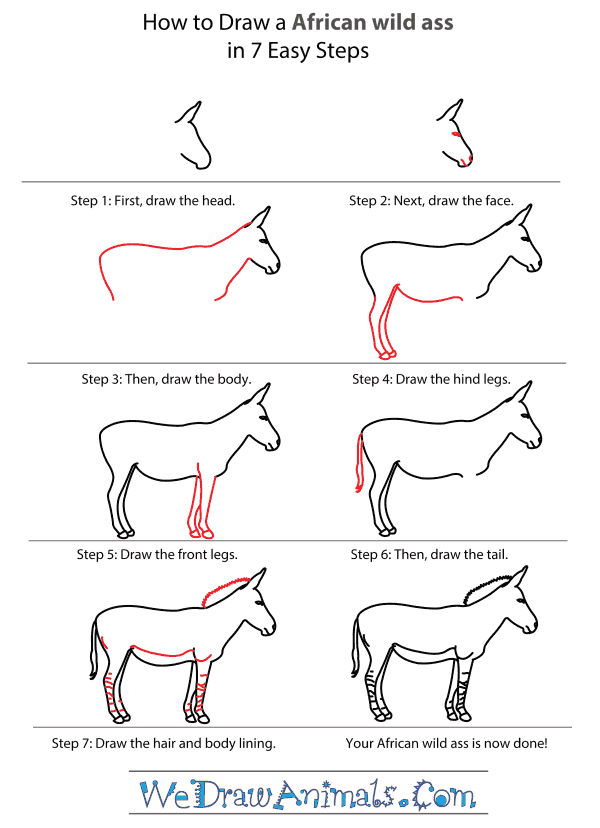In this quick tutorial you'll learn how to draw an African Wild Ass in 7 easy steps - great for kids and novice artists.
The images above represent how your finished drawing is going to look and the steps involved.
Below are the individual steps - you can click on each one for a High Resolution printable PDF version.
At the bottom you can read some interesting facts about the African Wild Ass.
Make sure you also check out any of the hundreds of drawing tutorials grouped by category.
How to Draw an African Wild Ass - Step-by-Step Tutorial
Step 1: Let's begin by drawing the head. Draw long ears pointing up, and then a long, rounded face pointing down.
Step 2: Add some detail to the face - draw a circle for the eye, a small circle for the nose and a line for the mouth.
Step 3: Let's draw the body. Draw a line with a slight downwards slope and then a sharp curve down at the back end. Draw another small line starting at the jaw.
Step 4: Draw the back hind legs close to one another, and a curved line for the donkey's belly. Leave a small gap.
Step 5: Draw the front legs like the hind legs. Don't forget to make lines at the base of the legs for the hooves.
Step 6: Draw a thin, hanging tail with a bushy end.
Step 7: Lastly, add some lines on the legs for detail, and a frizzy line for the ass's mane at the back of the head. Add a final line at the belly.
Interesting Facts about the African Wild Ass
The African wild ass (Equus africanus) is the wild version of the donkey. They spend some time in groups, but they move from group to group and will often pair off with others of the same sex outside of breeding season.
Did you know?
- The African wild ass is the ancestor of the donkey, and was domesticated 6,000 years ago.
- Only 570 African wild asses still exist in the wild, and they are considered critically endangered.
- They are stocky and grey, much like donkeys, although they have white legs striped with black, similar to a zebra.
- They eat a variety of grasses and herbs, and are able to survive without water for a few days.
- African wild asses tend to live in deserts, grasslands and bushlands, and tend to stay near water.
- Capture to be domesticated and interbreeding with domesticated donkeys is the greatest threat to the African wild ass. Hunting for food, sport, and competition with livestock further threaten the species.
Lesson plan note: Discuss what other types of animals have been bred into domesticated species, and what kind of effects it might have on their wild counterparts.








